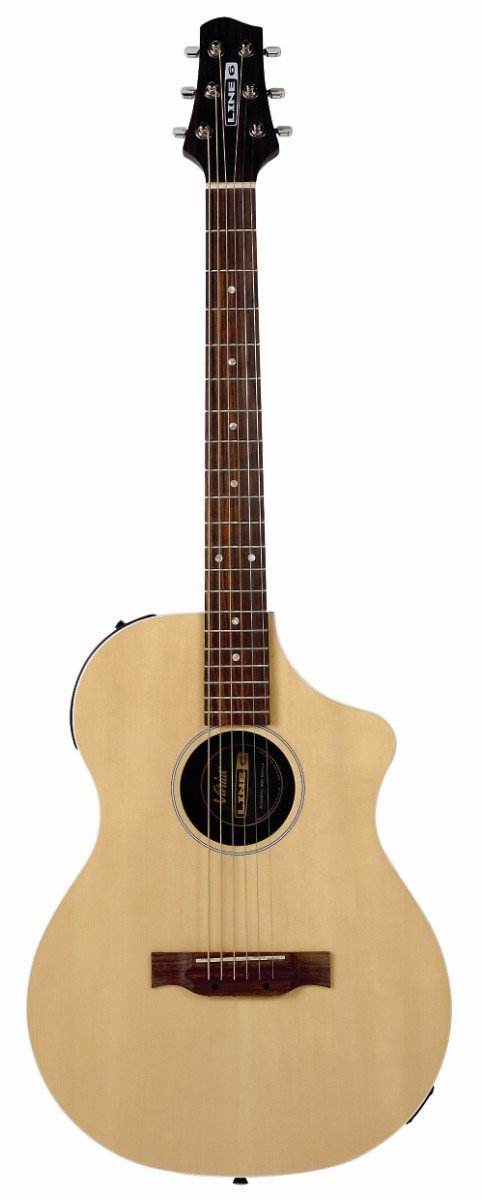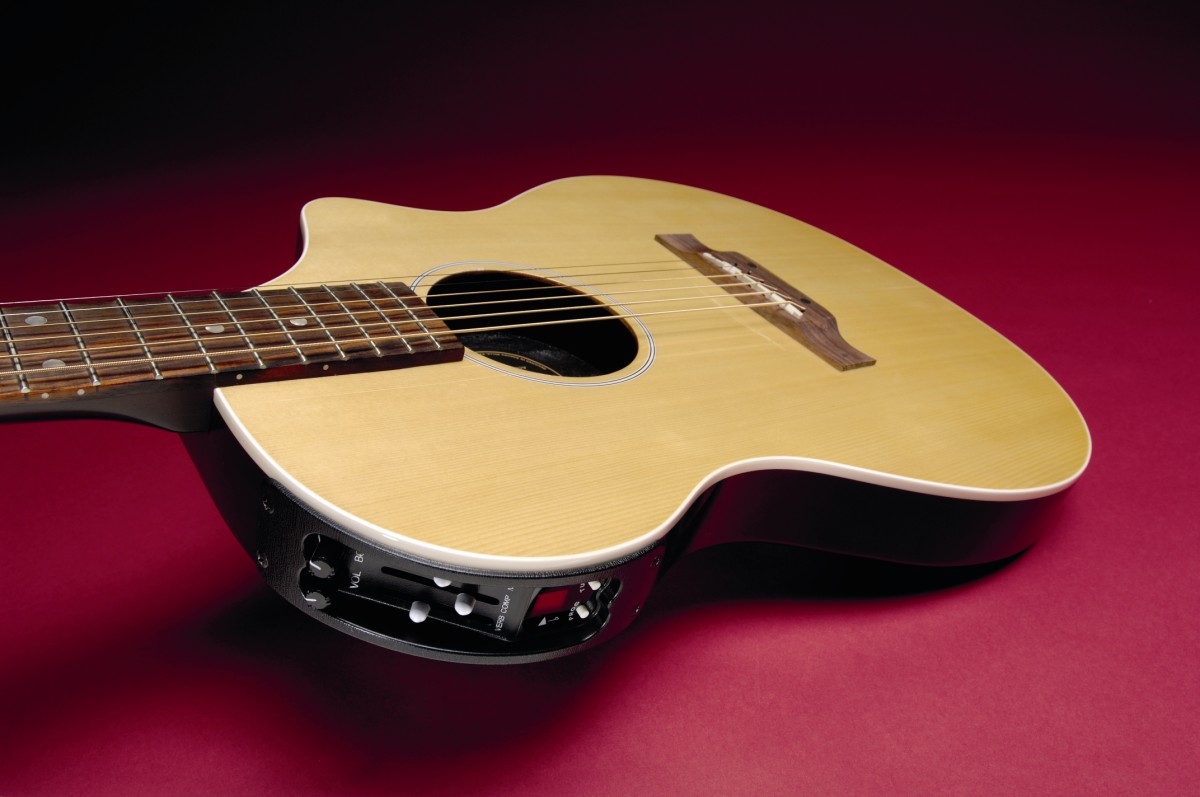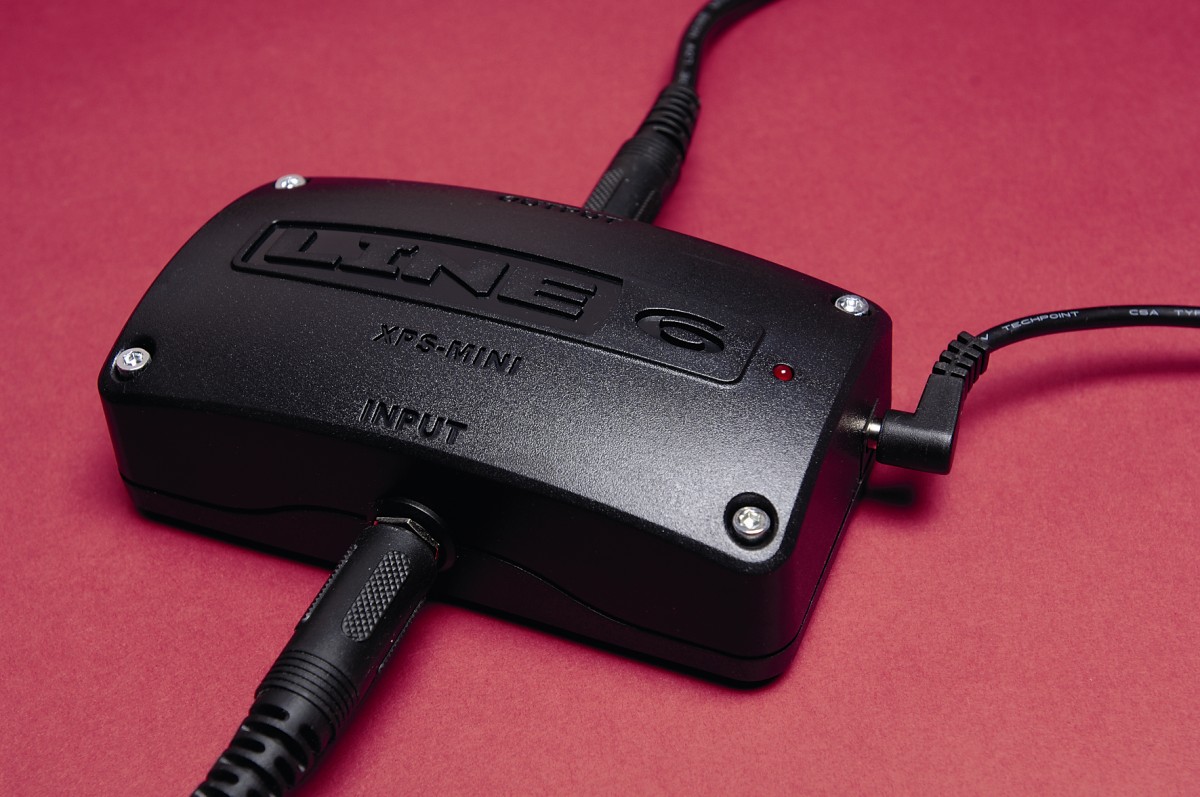MusicRadar Verdict
The Variax Acoustic 300 is a neat, ingenious and clearly useful device that´s also excellent value. However, while its plugged-in sound is more credible, versatile and feedback-resistant than any standard electro at this price, its image, and the fact it´s not a traditional acoustic guitar, will divide opinion. Also, its general build quality and playability leave room for improvement.
Pros
- +
Ease of use. Very handy onboard features/effects. Lifelike plugged-in performance.
Cons
- -
Shortcomings in the instrument itself. Program selection is only one-way.
MusicRadar's got your back



As the Variax 700 spawned the more basic and affordable Variax 300, so the Variax Acoustic 700 is joined by the stripped-down Variax Acoustic 300.
Sacrificing the 700´s sophisticated virtual tuning technology and wide variety of modelled acoustic guitars and instruments, the Variax Acoustic 300 has a simpler choice of sounds, but does feature useful onboard additions such as a chromatic tuner and reverb. So, while the uniquely versatile Variax Acoustic 700 remains a neat Swiss Army knife-style logistical and technical option, the considerably more affordable 300 will compete more directly with standard electro-acoustic guitars, especially now acoustic modelling pedals are cheaper.
Though it's similar to the Variax Acoustic 700, there are some differences here. Designed for enhanced acoustic response, the 300´s four-slab solid mahogany body is extensively and cunningly routed out to provide a large acoustic chamber under the bridge, incorporating a ‘half-X´ lower-bout bracing framework to support the soundboard. This routing extends to the upper bout´s left shoulder, creating a smaller chamber that the preamp sits in. As a result, the most active areas of the soundboard are free to vibrate. The laminate spruce top itself is smart yet plain, with its simple, cleanly cut-in black/white rosette.
Since it´s not accommodating an extended fingerboard, the dummy soundhole is round on this model, but it´s just as roughly finished. It´s a two-piece neck here, bolted-on as it is on the electric-style Variax models. The fingerboard is neat enough, but the frets could take a final once-over, and there are simple dot markers rather than snowflakes. It´s topped off with a squarely seated nut, but there´s some scruffy gubbins where this meets the headstock´s rosewood face veneer. Tuners are okay - some are smooth-geared, some a bit more grindy.
Another variation is the 300´s pinless bridge, and while it is fairly rough-hewn, the saddle is snug. This compensated saddle is similar to the discontinued Fishman Cleartone saddle, with five little ‘keyhole´ slots in it to enhance string separation. There´s no need for a complex six-way (hexaphonic) pickup on this model, so it´s a straightforward (mono) under-saddle piezo transducer.
The finish all looks neat and even, despite the ‘budget´ look of the neck´s dark red ‘cover-up´ stain and satin poly coat. Beneath the oval backplate there´s just a bunch of wires, with all the electronics integrated into the compact preamp. Its slim, side-mount control panel has three smooth-running white-capped sliders, two nicely damped rotary pots and a reasonably large dual-function LED window for displaying both string pitch and memory location number.
Power source
Want all the hottest music and gear news, reviews, deals, features and more, direct to your inbox? Sign up here.
The supplied XPS Mini phantom power supply box (mains adaptor included) is this guitar´s ideal power source. It feeds juice via the supplied gold-plugged stereo jack lead and offers an instrument level mono output, but no XLR line-out option. If you´re not using batteries at all, you´ll find that the empty AA battery cradle rattles around in its backplate-mounted compartment, but it is removable. On battery power you can use this guitar´s output jack just like a regular electro-acoustic. In emergencies you can unclip the AA battery cradle and attach a 9V battery to the exposed connector, but the preamp drains them very quickly. Neck proportions are fairly typical of many modern acoustic guitars, with a C-profile that tapers from about 21mm (1st fret) to 23.5mm (10th fret) in depth. String spacing, however, is unnecessarily tight for a neck of this width.
The fingerboard has a dry silk finish, which feels a bit parched but it´s not sticky, while the frets are a little rough-crowned for string bends, and have a few snagging ends too.
With a bolt-on joint it´s easier to get neck alignment (and therefore saddle height) just right - as it is here. Looking down the fingerboard from the nut end, however, it´s obvious that neither the fingerboard nor its frets are as uniform and even as they could be. With higher acoustic-style actions, though, you get a bit of leeway on less-than-ideal playing surfaces. Intonation is excellent on the high frets, but that slight shoulder means the transition from neck into cutaway is not as seamless as it is on the 700.
The Variax Acoustic 300´s more limited tonal palette is ‘inspired by´ just two classic acoustic guitars: a 1967 Martin 0-18 small-body and a 1954 Gibson J-45 jumbo (aka slope-shouldered dreadnought). Using the rotary ‘body´ control, with these models as your two opposite extreme settings, you can experiment with continuously variable hybrid body-size voices. As with the 700, you can set the modelled microphone placement relative to the virtual acoustic soundhole, which acts like a broad tone control in many ways. Useful for a ‘solo´ setting, the onboard compression is effectively simplified for intuitive usage.
Welcome additions include some ambience via the Verb effect, and a chromatic tuner, which was a bizarre omission on the 700. Once you´ve mucked about getting some sounds you like, you can easily store your settings in one of 10 fully programmable memory locations for swift recall. Confusingly different from an analogue onboard preamp, editing works like a programmable digital effects pedal. Annoyingly, you can only click forward through your programs.
Sounds
Acoustically, there´s reasonable volume for a quiet practice, with lots of sustain and a spicy twang. Plugged in, it's possible to compare the two extremes of the body control, with the other controls set as flat as is possible (mic placement at around halfway). You can certainly hear a marked transition from a focused, bright, snappy tone to a broader, warmer, meatier sound. But while you can´t deny the distinctly superior acoustic realism that Line 6´s modelling technology delivers, there´s not as profound a change in the basic acoustic character, from small-body to large-body, as you might wish for. Whether it´s the modelling algorithms or the 300´s own innate acoustic influence, there's definitely a homogenous essence to everything coming out.
On the Variax Acoustic 700 the Triple 0 model was the most convincing. Here, with the Body control set to about two o´clock and microphone placement just over halfway towards its closest setting, you can achieve a similarly sweet sound that's warm and nicely balanced. Pluck a high note hard and you'll hear a hint of piezo-type attack, but for the most part you can forget the transducer at the front of the signal chain, except for perennial issues like string balance problems. Thankfully, Line 6 has provided a tastefully dark reverb/ambience, and neither this nor the compression adversely colour your tone or add extraneous noise.
MusicRadar is the number one website for music-makers of all kinds, be they guitarists, drummers, keyboard players, DJs or producers...
- GEAR: We help musicians find the best gear with top-ranking gear round-ups and high-quality, authoritative reviews by a wide team of highly experienced experts.
- TIPS: We also provide tuition, from bite-sized tips to advanced work-outs and guidance from recognised musicians and stars.
- STARS: We talk to musicians and stars about their creative processes, and the nuts and bolts of their gear and technique. We give fans an insight into the craft of music-making that no other music website can.
